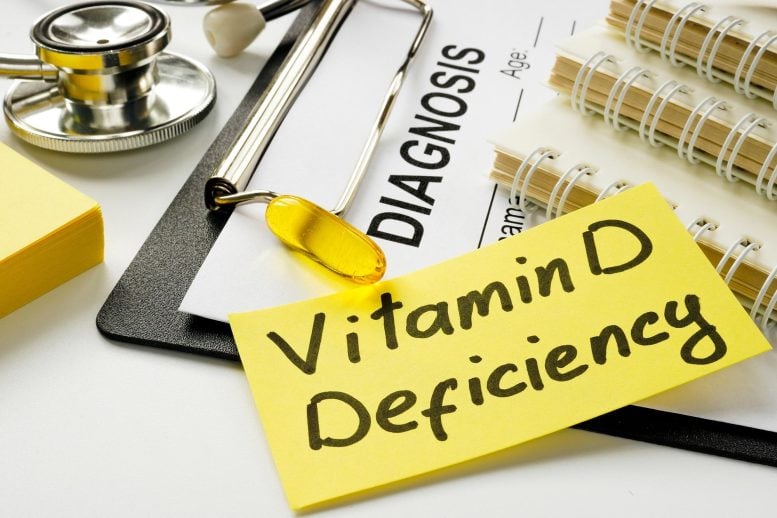
Vitamin D, known as the “sunshine vitamin,” is essential for our overall health, especially in promoting bone health and regulating the immune system. This article delves into the science of vitamin D, highlighting its importance, the risks associated with its deficiency, and the challenges of obtaining it during winter.
Vitamin D, often referred to as the “sunshine vitamin,” plays an instrumental role in maintaining our overall health. While many vitamins are derived from the foods we eat, vitamin D is unique because our bodies produce it in response to sunlight exposure. However, during the darker winter months, acquiring adequate amounts of this essential nutrient becomes a challenge. Let’s delve into the science behind this vitamin and explore how we can ensure sufficient intake during the sun-scarce season.
The Role of Vitamin D in Our Body
Vitamin D is a fat-soluble vitamin that plays a pivotal role in calcium and phosphorus absorption in our gut, which in turn supports the maintenance of healthy bones and teeth. Additionally, it regulates immune system functions and reduces inflammation, thus aiding in the prevention of various autoimmune diseases.[1]

Vitamin D deficiency is a prevalent health concern that can result in weakened bones, muscle pain, and mood fluctuations. As vitamin D is crucial for calcium absorption, its deficiency can lead to conditions like osteoporosis and osteomalacia. Additionally, lower levels of this vitamin have been linked to depressive symptoms and reduced immune functionality, making individuals more susceptible to infections.
The Risks of Vitamin D Deficiency
A deficiency in vitamin D can lead to a range of health complications. Some of the most common include:
- Bone and Muscle Weakness: As vitamin D aids in calcium absorption, a deficiency can result in brittle bone conditions like osteoporosis and osteomalacia.[2]
- Mood Fluctuations and Depression: Several studies have found correlations between low vitamin D levels and depressive symptoms.[3]
- Reduced Immune Function: A lack of vitamin D can compromise the immune system, making the body more susceptible to infections.[4]
Challenges in Winter Months
The primary source of vitamin D is sunlight. Specifically, our skin produces vitamin D when exposed to UVB rays. However, during winter, the angle of the sun changes, and many places, especially those at higher latitudes, experience fewer hours of daylight. This reduced exposure to sunlight can significantly hinder the body’s ability to produce adequate vitamin D.[5]

Several foods are rich in vitamin D, providing an alternative to sunlight exposure. Fatty fish like salmon, mackerel, and sardines are among the top sources. Additionally, fortified foods such as milk, orange juice, and cereals have been enhanced with vitamin D, making them excellent dietary options for boosting intake.
Overcoming the Winter Vitamin D Deficit
Fortunately, there are several strategies one can employ to maintain healthy vitamin D levels during the winter months:
- Dietary Sources: Fatty fish like salmon, mackerel, and sardines are rich in vitamin D. Other sources include fortified foods, such as milk, orange juice, and cereals.[6]
- Supplements: Vitamin D supplements are widely available and can be an effective way to ensure you’re getting enough. However, it’s crucial to consult with a healthcare professional before starting any supplementation.
- UV Lamps and Bulbs: In regions where sunlight is scarce, UV lamps and bulbs that emit UVB radiation can be used as an alternative source for vitamin D synthesis.[7]
Conclusion
While the darker winter months can pose challenges in obtaining sufficient vitamin D, understanding its importance and knowing the available sources can help in navigating this seasonal hurdle. By ensuring consistent intake, whether through sunlight, diet, or supplements, we can safeguard our health against the potential risks of deficiency.
References:
- “Vitamin D Deficiency” by Holick, Michael F., 18 July 2007, The New England Journal of Medicine.
DOI: 10.1056/NEJMra070553 - “Skeletal and Extraskeletal Actions of Vitamin D: Current Evidence and Outstanding Questions” by Roger Bouillon, Claudio Marcocci, Geert Carmeliet, Daniel Bikle, John H White, Bess Dawson-Hughes, Paul Lips, Craig F Munns, Marise Lazaretti-Castro, Andrea Giustina and John Bilezikian, 12 October 2018, Endocrine Reviews.
DOI: 10.1210/er.2018-00126 - “Vitamin D deficiency and depression in adults: systematic review and meta-analysis” by Rebecca E. S. Anglin, Zainab Samaan, Stephen D. Walter and Sarah D. McDonald, 2 January 2018, The British Journal of Psychiatry.
DOI: 10.1192/bjp.bp.111.106666 - “Vitamin D and the Immune System” by Cynthia Aranow, MD, 1 August 2011, Journal of Investigative Medicine.
DOI: 10.2310/JIM.0b013e31821b8755 - “Ultraviolet Exposure Scenarios: Risks of Erythema from Recommendations on Cutaneous Vitamin D Synthesis” by Ann R. Webb and Ola Engelsen, 2008, Sunlight, Vitamin D and Skin Cancer.
DOI: 10.1007/978-0-387-77574-6_6 - “Food-based strategies to meet the challenges of micronutrient malnutrition in the developing world” by Kraisid Tontisirin, Guy Nantel and Lalita Bhattacharjee, 27 March 2009, Proceedings of the Nutrition Society.
DOI: 10.1079/PNS2002155 - “Sunlight and vitamin D for bone health and prevention of autoimmune diseases, cancers, and cardiovascular disease23” by Michael F Holick, 1 December 2004, The American Journal of Clinical Nutrition.
DOI: 10.1093/ajcn/80.6.1678S









Be the first to comment on "Bright Ideas for Dim Days: The Science Behind Vitamin D and Winter Woes"